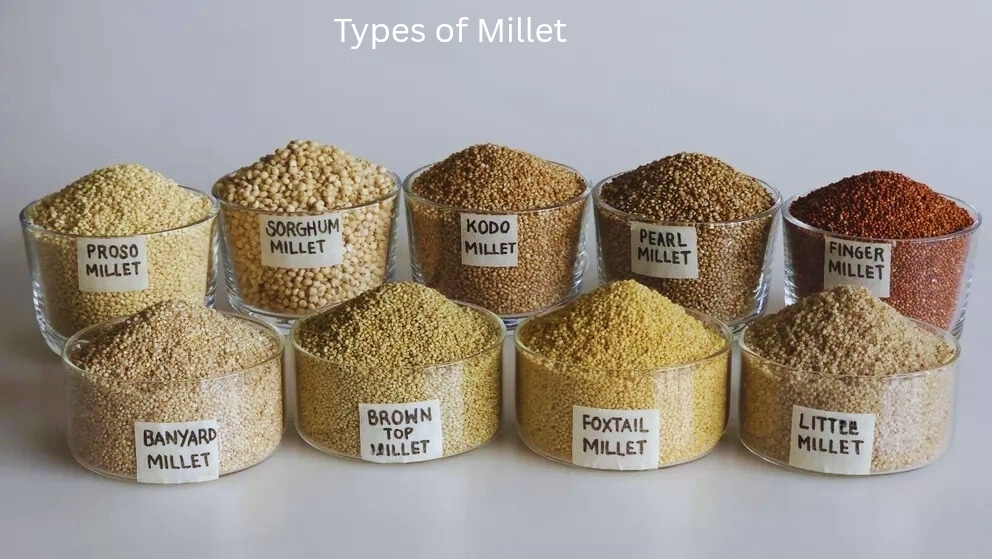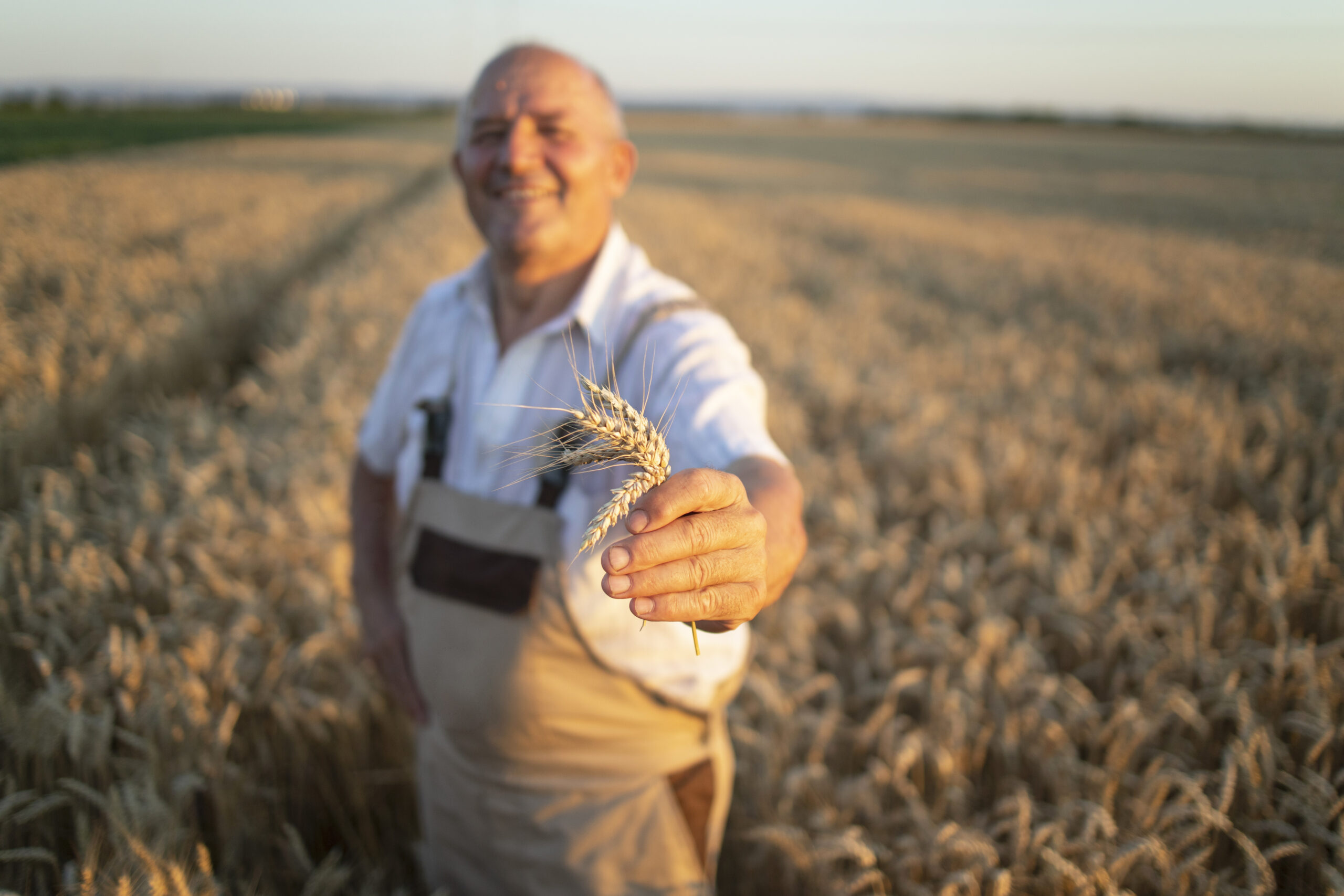Table of Contents
What is Millet – A Whisper From the Past
This blog post will answer the question – What is Millet? You must have heard that millet is a variety of small seeded cereal grains belonging to Poaceae family. But what you will discover here is that it is not just a grain. It is a golden grain of ancient wisdom and wellness. It is a tale carried by the wind across ancient lands. Born from sun-drenched fields, it has fed empires, healed hearts, and strengthened souls. This small seed—often overlooked—holds the strength of centuries.
Millet is one of the oldest grains in human history, with a legacy more than 10,000 years back. It was first cultivated in regions of Africa and Asia, where early civilizations relied on it as a vital source of food.Millet’s ability to thrive in hot, dry conditions made it an essential grain for communities facing unpredictable climates.
In India, millet has been grown for thousands of years. Ancient Indian texts, including the Rigveda, reference millet as an important part of early diets. It was used in various traditional recipes and became a core part of rural and agricultural life.
As human migration and trade routes expanded, millet spread to Europe and other parts of Asia. It became an important grain in regions where the soil and climate conditions were too harsh for other crops like wheat and barley.
For centuries, millet served as a critical food source across many cultures. It was used to make flatbreads, porridges, and fermented beverages. Its resilience and quick growing cycle made it a dependable crop for farmers facing tough environmental conditions.
However, as agriculture industrialized, and as crops like wheat, rice, and maize became dominant globally, millet’s popularity declined, especially in the Western world. It was often regarded as a “poor man’s food” and gradually replaced by more commercially profitable grains.
What is Millet – A Grain That Loves the Earth
Millet is good for the Earth for several key reasons, good for the environment, for reducing the carbon footprint & global warming.
1. Low Water Requirement
Millet are drought-resistant crops and require significantly less water compared to rice or wheat. This makes them ideal for arid and semi-arid regions and helps conserve freshwater resources.
2. Grows in Poor Soils
Millets can thrive in less fertile, marginal soils where other grains struggle. This reduces the need for intensive land clearing and allows for sustainable farming on degraded lands.
3. Minimal Chemical Inputs
They need fewer fertilizers and pesticides. This lowers the risk of soil degradation, water pollution, and greenhouse gas emissions associated with chemical agriculture.
4. Short Growing Season
Most millets mature quickly (60–90 days), which means less energy and resource consumption and the ability to grow multiple crops per year without exhausting the soil.
5. Promotes Biodiversity
Millet farming supports crop diversity, which is crucial for resilient agricultural systems and ecosystem health. It helps reduce dependence on a few major cereals like wheat, rice, and corn.
6. Carbon Footprint
Because of the low input requirements and adaptability, millet farming has a smaller carbon footprint than conventional cereal farming.
“In a time of climate change and chaos, millet is resilience.
Growing millet means choosing sustainability.
Consuming millet is a vow to protect the planet”
What is Millet – A Farmer’s Friend
Millet is a powerful crop for farmers, especially those working in tough climates and rural areas. It offers many important benefits that support their livelihoods and make farming more sustainable.

In countries like India, farmer suicides have long been a heartbreaking reality, often driven by crop failures, heavy debts, and the increasing costs of conventional farming. Many farmers who rely on water-intensive crops like sugarcane, cotton, or rice struggle when monsoons fail or market prices crash, leaving them trapped in unbearable financial stress.
Millet is offering a different path—a lifeline of hope. Here you find highlights of how millet is helping farmers.

How Millet Helps Farmers 🌾
| Benefit | Details |
|---|---|
| Drought-Resistant | Millet grows well with minimal water, making it ideal for dry regions. |
| Low Cost of Cultivation | Needs fewer fertilizers, pesticides, and irrigation, reducing farming costs. |
| Short Growing Season | Matures quickly (60–90 days), allowing multiple harvests per year. |
| Grows in Poor Soil | Thrives even in sandy, rocky, or less fertile soils. |
| Rising Market Demand | Popularity is increasing due to health and sustainability trends. |
| Pest and Disease Resistant | Naturally resilient, requiring fewer chemical treatments. |
| Supports Food Security | Provides a reliable food source even in tough weather conditions. |
| Government Support | Many countries offer incentives, training, and market access for millet farmers. |
What is Millet – A Powerhouse of Nutrition
Used by civilizations long gone, millet is a gift from nature. It’s gluten-free, rich in fiber, and a powerhouse of essential nutrients.
Millet is a warrior of wellness. With iron to fuel your blood, magnesium to soothe your nerves, and B-vitamins to awaken your mind, it is nature’s quiet remedy. Unlike refined grains, it asks for nothing and gives everything.
It’s gentle on the stomach. It balances blood sugar. It keeps hunger at bay and energy alive. One spoonful, and you’ll feel the earth’s embrace.
Types of Millet
Dr. Khadar Valli, a renowned scientist and health activist, is often called the “Millet Man of India.”
He has dedicated his life to promoting the use of millet for better health and sustainable farming.
He is a prominent advocate for millet-based nutrition, classifies grains into three categories based on their health benefits:
Positive Grains (Siridhanya): Aid in curing health disorders and diseases, with fiber content ranging from 8–12%
Negative Grains: Cause diseases (e.g., rice, wheat; fiber content <2%).
Neutral Grains: Do not cause new diseases but also do not aid in curing existing ones (e.g., jowar, bajra, finger millet; fiber content 3–6%).
Through his research, he has discovered that all millet varieties come under two groups: Positive and Neutral Grains.
Positive Grain
According to the “Millet Man of India”, positive grains are termed positive because they are good whole grains with good fiber content of 8-12% or can say carbs:fiber ratio less than 10. They have the potential of healing & detoxifying the body & reversing lifestyle diseases. They are considered the most beneficial for human health.
They are rich in fiber, nutrients, and natural healing properties.
These grains help detoxify the body, regulate blood sugar, improve digestion, and support overall well-being.
Here is a comprehensive table of Dr. Khadar Valli’s 5 Positive Millets (Siridhanya), with their names in English, Hindi, Telugu, Tamil, Kannada, Gujarati, and Punjabi:


Here’s a nutritional comparison of positive millet grains per 100 grams:

Benefits of Positive Grain – Millet :
- Help manage diabetes and obesity.
- Aid in detoxification and cleansing of the body.
- Improve gut health and digestion.
- Strengthen immunity naturally.
- Support healing of chronic diseases.
Dr. Khadar Valli strongly recommends making Positive Millet a regular part of daily meals for long-term health.
Neutral Grain
Neutral grain are whole grains with fiber content of 3-6% or whose carbs:fiber ratio is more than 10 but less than 60. They are good for health but are not as powerful as Positive Grain in healing or detoxifying the body.They are nutritious but do not have the same medicinal value.
Examples of Neutral Grain Millet:

Benefits of Neutral Grain – Millet:
- Provide energy and essential nutrients.
- Good sources of iron, calcium, and protein.
- Help maintain a balanced diet.
Neutral grain are far better than refined grains like white rice or wheat but are less potent in reversing lifestyle diseases compared to Positive grain.
Summary

Read detailed blog post on Millet vs Wheat vs Rice here. Read about Whole Grain vs Refined Grain here.
Is Quinoa a Millet? Read here.
Watch the video in hindi with nutritional benefits of millet here in comparison to wheat & rice.
Dr. Khadar Valli suggests consuming 80% positive millet & 20% neutral millet for healthy body. His message is simple:
“If you want true health and natural healing, eat Positive Millet daily, live simply, and stay close to nature.”
To know how the Millet Man of India is healing the Nation, read the blog post here.
For nutrients & fiber content comparison of all grains check here.
Millet and the Modern Soul: A Healing Rebirth
In a world rushing past, millet slows us down. It reminds us of hands that sowed with love and meals made with care.
For those weary of wheat or haunted by gluten, millet offers peace. It doesn’t inflame. It calms.
It’s not just food. It’s a quiet revolution on your plate.
How Millet Nourishes More Than Just the Body
Millet feeds not only the flesh but also the spirit.
It brings balance. It offers mindfulness. It encourages simplicity.
Every grain is a meditation.
Every bite, a reminder that health is found in the humble.
Eating millet is choosing intention over impulse. It’s reclaiming roots. It’s honoring the land.
The Hidden Beauty of Millet in Your Kitchen
Millet waits for your touch. Soak it in water for 6-8 hours before cooking. Boil it like rice. Ferment it like a dosa. Make it into porridge. Toast it into snacks. Its texture is tender. Its taste is mild, yet comforting.
It welcomes spices. It embraces fruits. It holds warmth like a memory. Whether savory or sweet, millet molds itself to your soul’s craving. Watch tasty millet recipes here.

Dr. Khadar Valli suggests preparing fermented porridge of positive millet for healing and reversing lifestyle diseases. Learn the preparation of fermented porridge here.
Final Thoughts
Millet, the Forgotten Hero
Let us bring millet back into our lives.
Not as a trend, but as a truth.
Let it nourish your mornings. Let it grace your table. Let it awaken your roots.
Millet is more than food. It is a feeling.
A connection. A return.
Taste it once—and you’ll never forget its song.
“Eat millet to save the planet, to help the farmers & for your own good health”
Watch the video on why eat millet in Hindi & in English below-
Watch the video on why eat millet in English –

Great information
Thank you, glad you like it. Do share with others for awareness & for the welfare of our planet, our farmers & for humanity.